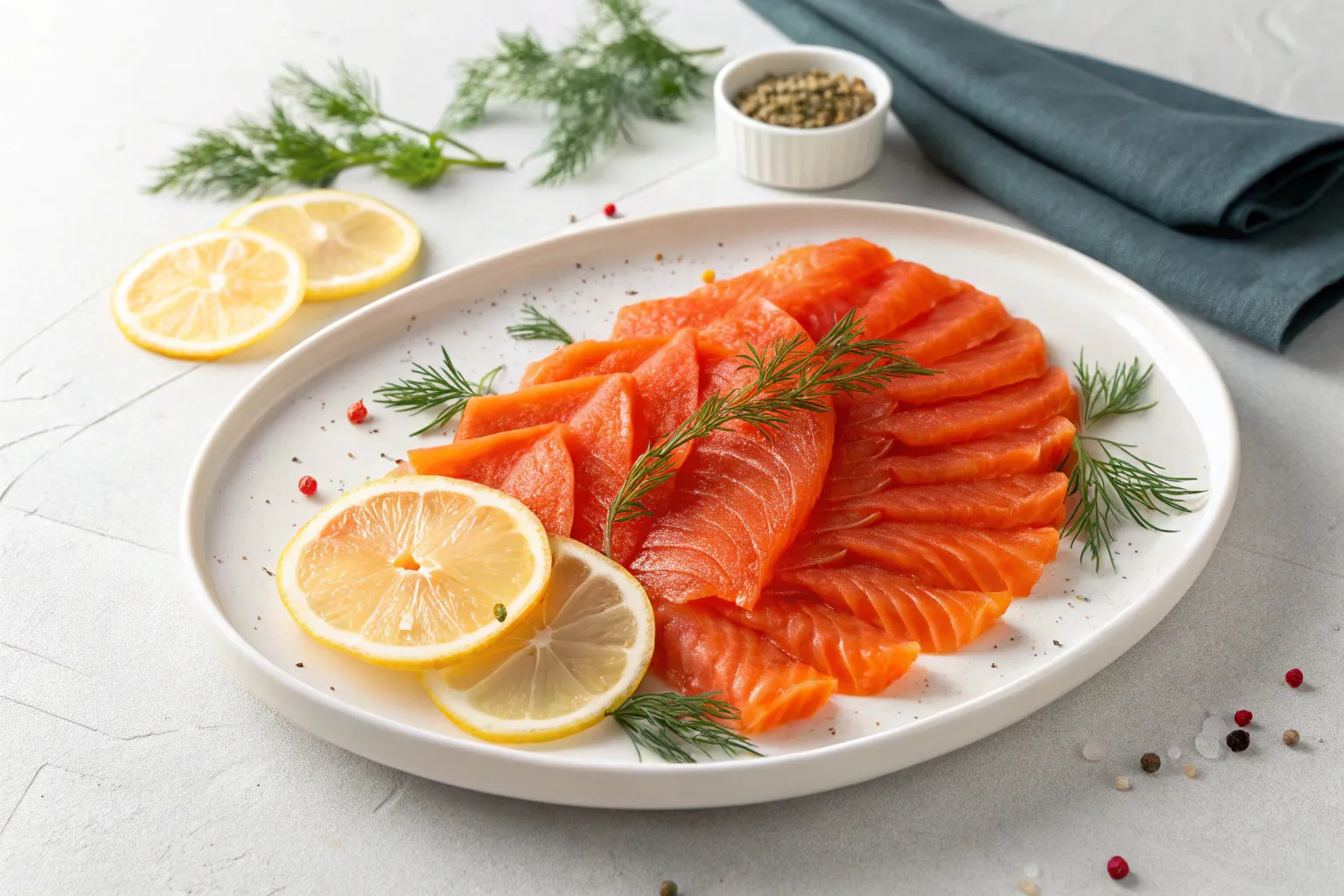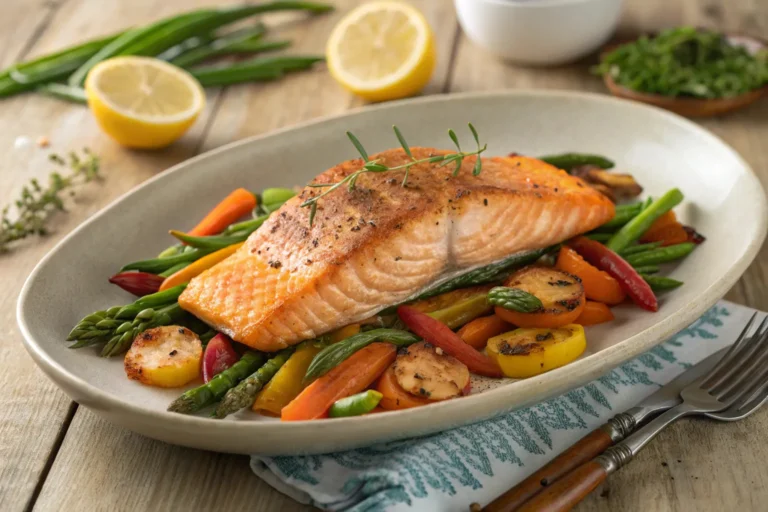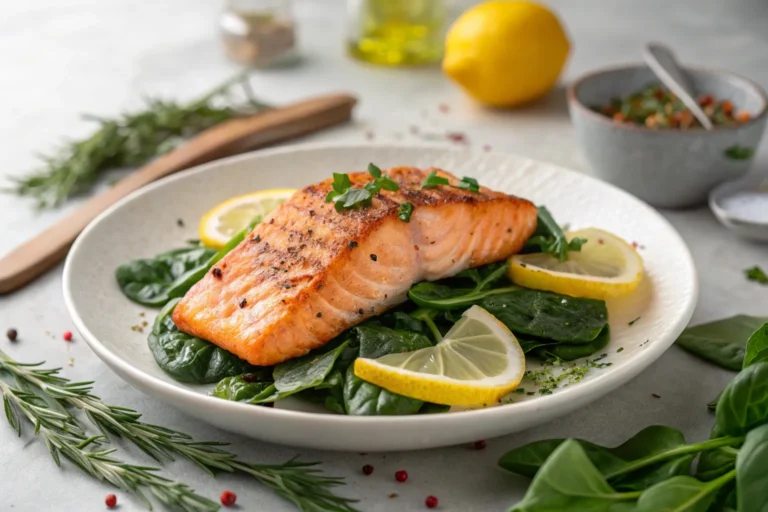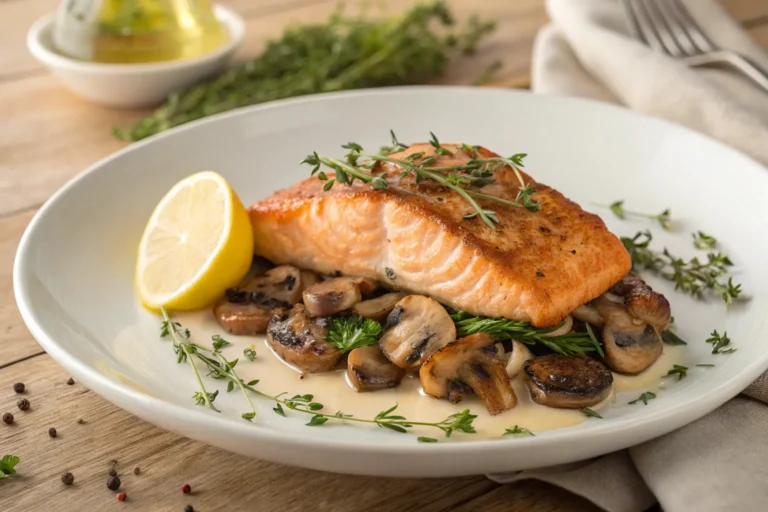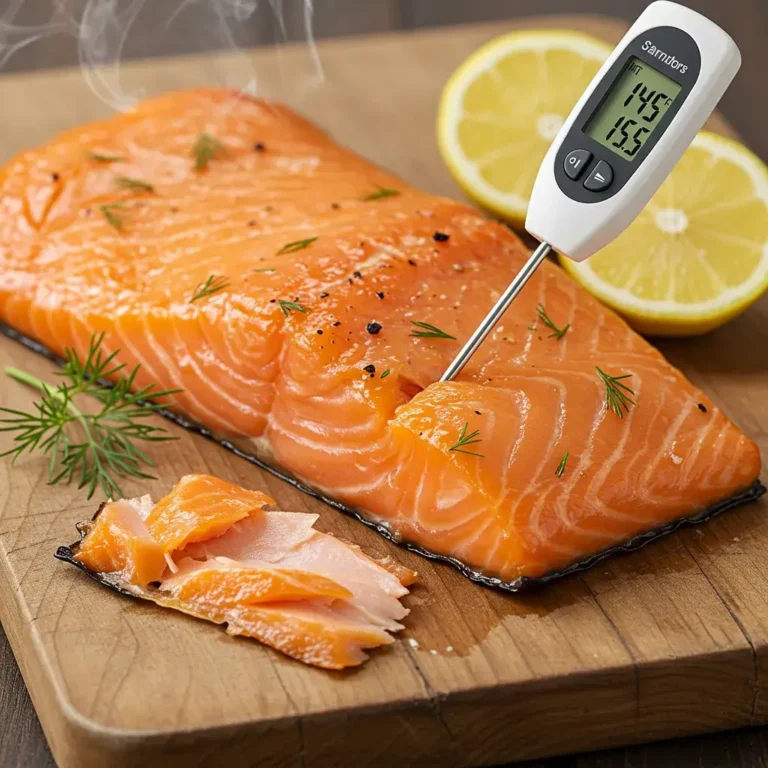Keto-Friendly Smoked Salmon Sashimi: High Protein, Zero Carbs
Imagine finding a dish that makes your keto diet feel free and fun. Smoked salmon sashimi is more than a meal. It’s a protein-rich find that’s perfect for those who love healthy food and want to avoid carbs.
Table of Contents
Understanding Smoked Salmon Sashimi and Its Health Benefits
Smoked salmon sashimi is a top choice in Japanese cuisine. It combines great taste with lots of health benefits. This dish is not just tasty; it’s also very good for you.
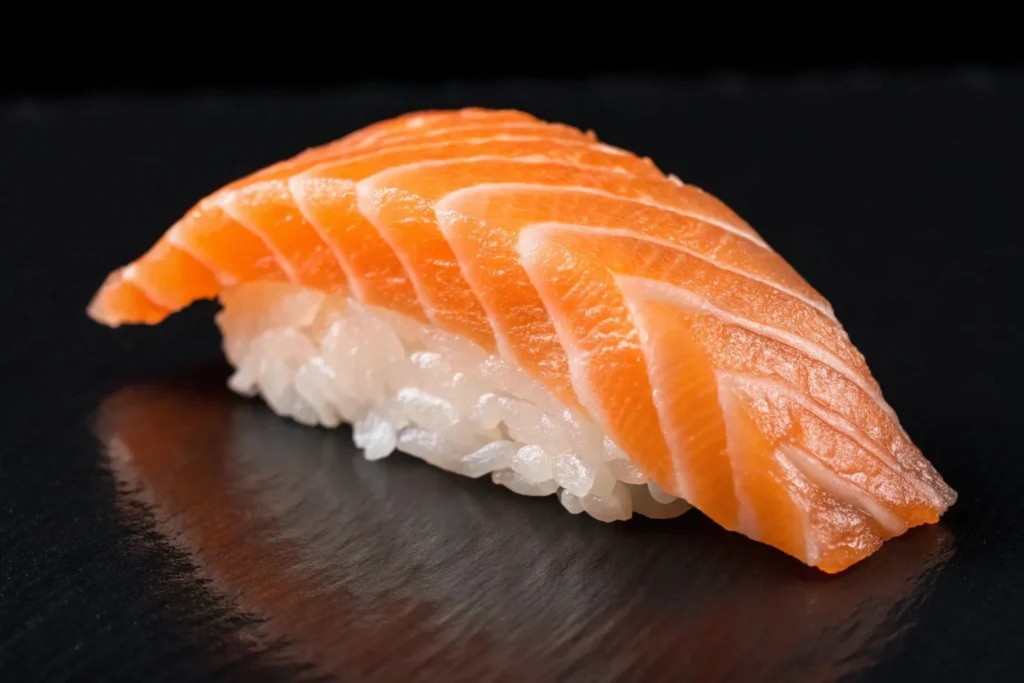
Nutritional Profile and Omega-3 Content
Salmon is known for its omega-3s. These fats are great for your health. They help your heart, reduce inflammation, improve brain function, and keep your skin and joints healthy.
Why It’s Perfect for Keto Diet
For those on a keto diet, smoked salmon sashimi is perfect. It’s high in protein and fat, but has no carbs. This makes it a great fit for a keto diet.
Health Advantages of Raw Fish Consumption
Raw fish in Japanese dishes is very nutritious. Your body absorbs nutrients better when fish is raw. This way, you get more of the good stuff without losing important vitamins and minerals.
Adding smoked salmon sashimi to your meals is a smart choice. It’s not just tasty; it’s also a great way to get the nutrients you need.
Essential Ingredients and Equipment for Perfect Sashimi
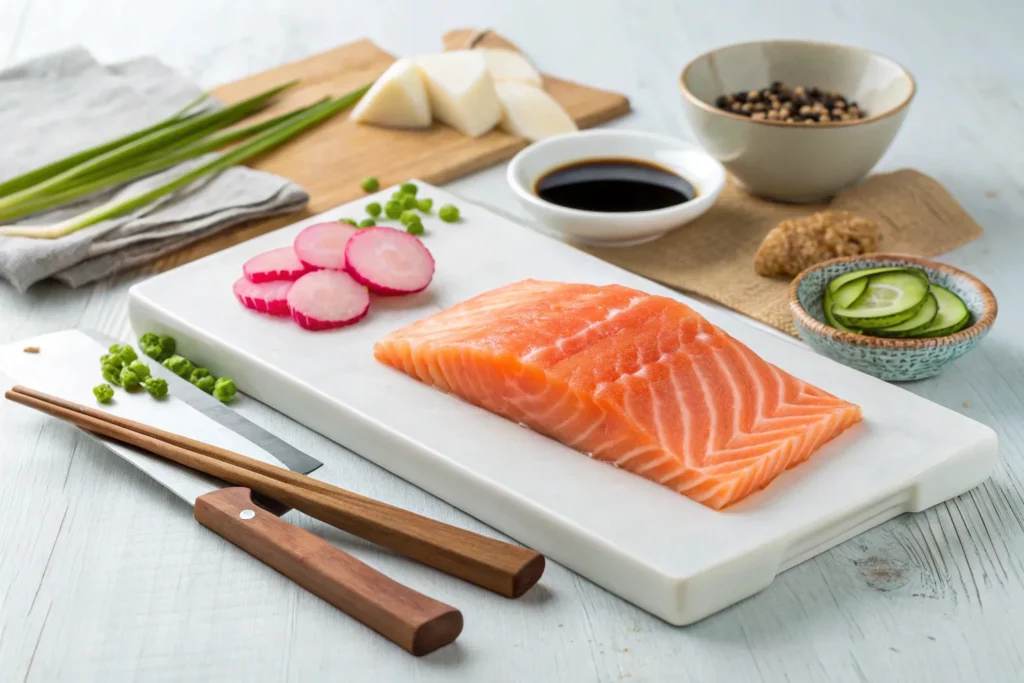
Making tasty salmon sashimi recipes is more than just raw fish. Your journey starts with the right ingredients and top-notch tools. Knowing what you need can elevate your cooking at home.
Now, let’s look at the key ingredients for your salmon sashimi:
- Sushi-grade salmon – Fresh, high-quality fish is crucial
- Kosher salt or sea salt for curing
- Fresh herbs like dill or chives
- Optional seasonings: wasabi, soy sauce, pickled ginger
Having the right tools is key to making restaurant-quality salmon sashimi. Here are the essential tools:
- Sharp sashimi knife (ideally a long, thin yanagiba knife)
- Cutting board dedicated to raw fish
- High-quality smoking wood chips
- Precision kitchen scale
- Ceramic or glass serving plates
When picking your salmon, always go for sushi-grade fish. Your local fishmonger or specialty seafood market can help you find the freshest catch for your dishes.
Selecting and Handling Sushi-Grade Salmon
Making tasty raw fish platters begins with picking the best sushi-grade fish. It’s important to know how to choose, store, and handle salmon safely. This is key for making great sashimi at home.
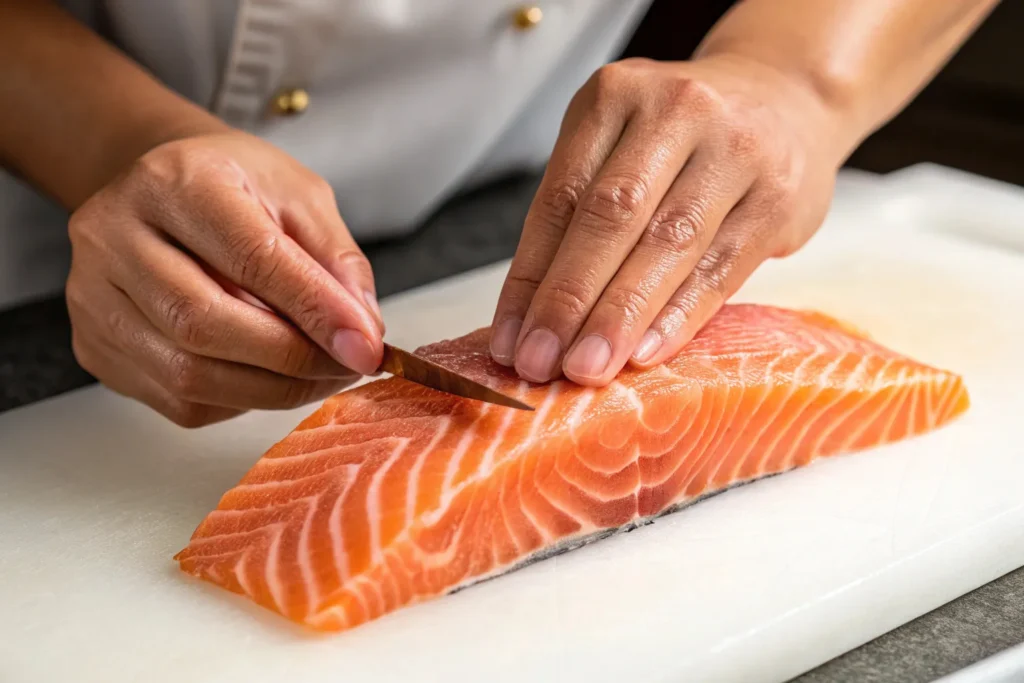
How to Identify Fresh Salmon
When looking for sushi-grade fish, watch for these signs of freshness:
- Bright, vibrant color with no discoloration
- Firm flesh that springs back when touched
- Clean, ocean-like smell with no fishy odor
- Translucent appearance
Proper Storage Methods
Keeping your sushi-grade fish fresh needs careful storage. Salmon should be kept very cold:
- Store immediately in the coldest part of your refrigerator
- Use within 1-2 days of purchase
- Keep wrapped in plastic or sealed container
- Maintain temperature below 40°F
Food Safety Guidelines
Raw fish platters need strict food safety rules. Always buy salmon from trusted sources that say it’s sushi-grade. This means the fish has been frozen before, killing parasites and making it safe for raw eating.
When preparing sushi-grade salmon, use clean cutting surfaces and sharp knives. Wash your hands well. Keep raw fish away from other foods to avoid contamination.
Traditional Japanese Smoking Techniques
In Japan, smoking fish turns it into a special treat. This art is rooted in old traditions. It makes the fish taste better and last longer.
There are two main ways to smoke fish in Japan:
- Cold Smoking: This method smokes fish at low temperatures, between 70-90°F.
- Hot Smoking: It cooks and smokes the fish at higher temperatures.
Choosing the right wood is key to making great smoked fish. Japanese chefs pick special wood chips for their flavors:
- Cherry wood adds a sweet taste.
- Oak gives a strong, earthy flavor.
- Maple wood adds a smooth, gentle taste.
Learning about these smoking techniques makes enjoying cured seafood more meaningful. The care and precision in Japanese smoked salmon show why it’s so loved worldwide.
Step-by-Step Preparation Method
Making delicious salmon sashimi recipes needs precision and care. Your journey to making smoked salmon sashimi begins with understanding the detailed preparation process. This process turns simple salmon into a culinary masterpiece.
Curing the Salmon
The first key step in making smoked salmon sashimi is curing the salmon. You’ll need to pick high-quality, sushi-grade salmon. Then, prepare a dry cure mix:
- Kosher salt (2 tablespoons per pound of salmon)
- Brown sugar (1 tablespoon)
- Fresh cracked black pepper
- Optional: Dill or juniper berries for extra flavor
Smoking Techniques
Smoking your salmon needs careful temperature control and patience. For real smoked salmon sashimi, follow these important steps:
- Preheat your smoker to 165°F (74°C)
- Use fruitwood chips for a subtle, sweet flavor
- Smoke the salmon for about 2-3 hours
- Make sure the internal temperature reaches 145°F (63°C)
Expert Slicing and Plating
The final art of salmon sashimi recipes is in precise slicing and elegant presentation. Use a sharp yanagiba knife and slice against the grain in thin, translucent pieces. Place your smoked salmon sashimi on a chilled plate. Add microgreens or pickled ginger for an authentic touch.
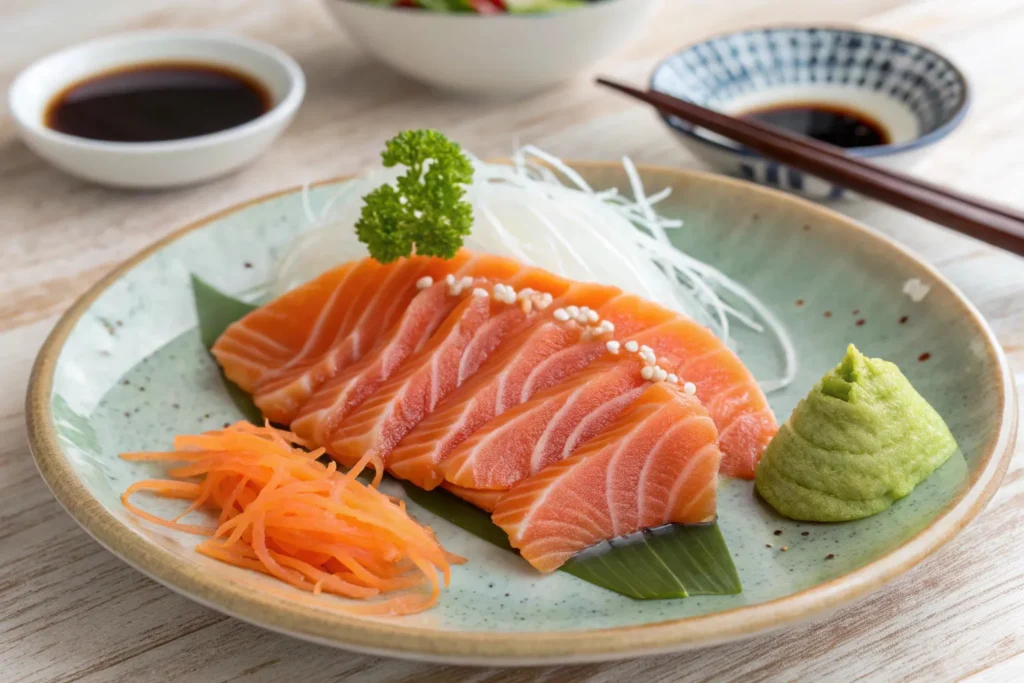
Conclusion
Making delicious smoked salmon sashimi is an art that comes from Japanese cuisine. You’ve learned how to make tasty appetizers that are good for your keto diet. This guide showed you how to do it.
Preparing this dish is more than just cooking. It’s about getting the flavors, textures, and nutrition right. Each piece of salmon shows your dedication to quality and health. Your homemade sashimi will impress anyone, whether it’s for a party or a special meal.
Keep practicing to get better. As you try new things, you’ll learn more about smoking, choosing ingredients, and how to present them. Enjoy the journey and the yummy food you make.
FAQ
Is smoked salmon sashimi keto-friendly?
Yes, smoked salmon sashimi is great for a keto diet. It’s full of protein and healthy fats, with no carbs. This makes it perfect for those on a low-carb diet. The omega-3s in the fish add important nutrients without affecting your carb intake.
How do I ensure the salmon is safe to eat raw?
Use sushi-grade salmon from a trusted source. Look for fish that’s been frozen to kill parasites. Make sure the salmon smells fresh and has been kept cold. If unsure, ask a fishmonger about safe raw fish.
What equipment do I need to make smoked salmon sashimi at home?
You’ll need a sharp sashimi knife, a smoker, and a cutting board. Also, you’ll need space in the fridge and containers to store it. Optional tools include fish tweezers, a scaler, and plating tools to make it look nice.
How long can I store prepared smoked salmon sashimi?
You can keep it in the fridge for 1-2 days at 40°F or below. Store it in an airtight container in the coldest part of the fridge. If it’s not fresh, throw it away and make a new batch.
Can I use frozen salmon for sashimi?
Yes, but it must be sushi-grade and flash-frozen. Thaw it in the fridge and use it right away. Buy from a reputable source that says it’s safe for raw eating.
What are the best seasonings for smoked salmon sashimi?
Try Japanese seasonings like ponzu sauce, wasabi, and pickled ginger. Sea salt or light soy sauce work well too. A squeeze of lemon or yuzu can also bring out the fish’s flavor.
Is smoked salmon sashimi nutritionally beneficial?
Absolutely! It’s full of protein, omega-3s, vitamin D, and B vitamins. It’s good for your heart, brain, and is a low-carb protein source. It’s both tasty and nutritious.
How thin should I slice the salmon for sashimi?
Slices should be 2-3 millimeters thick. Use a sharp knife and slice against the grain. This makes the slices thin and lets the fish’s flavor shine.
Did this recipe work for you? We’d love to hear how it turned out!
There are no reviews yet. Be the first one to write one.

